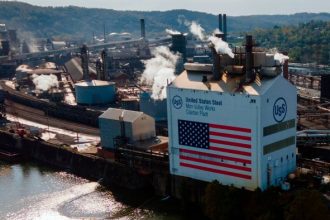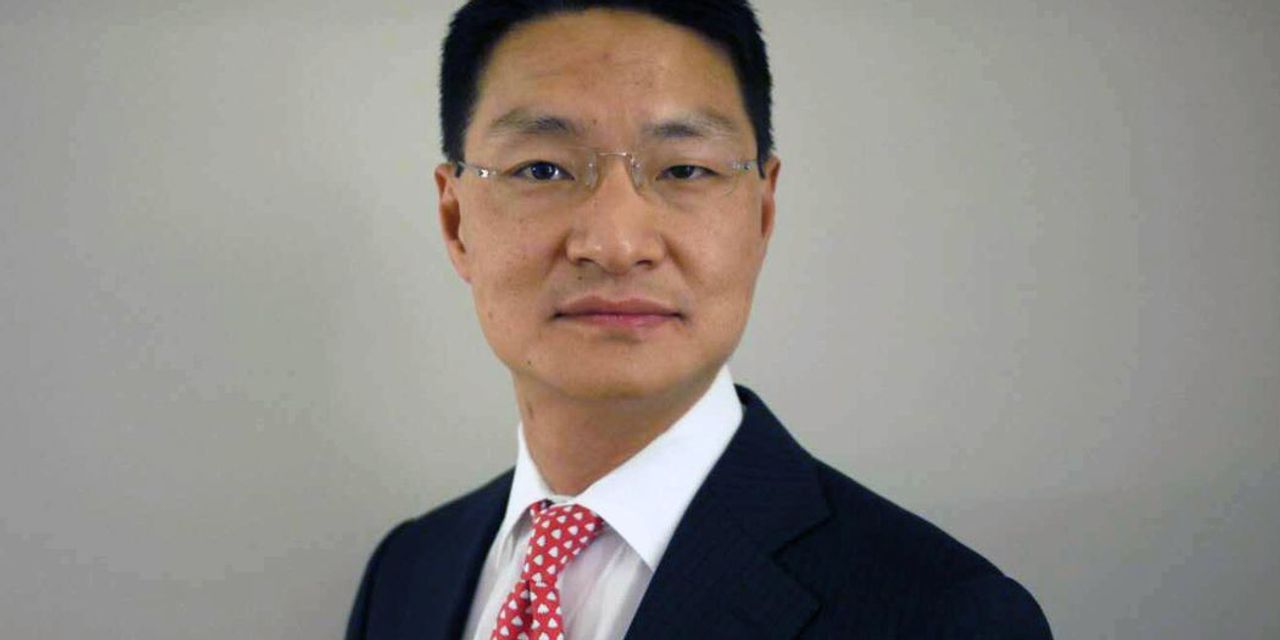A year ago, Gang Hu, an inflation trader at New York hedge fund WinShore Capital Partners, made the prescient call that inflation would be “stickier than most people imagine.” Now, he’s flagging the risk that financial markets are locked in a “self-defeating feedback loop” that makes it more likely the Federal Reserve will need to keep raising interest rates.
Hu’s argument boils down to one point: that it will likely require a recession to successfully stamp out inflation, period. And without an economic downturn, structural forces putting upward pressure on inflation will likely remain in place, which could un-anchor the public’s long-term expectations.
By his way of thinking, the feedback loop begins with the market’s current view that the Fed will probably stop hiking rates near current levels of between 5%-5.25%. But the central bank’s fear of losing control of inflation expectations is likely to keep pushing policy makers to “talk hawkish” to preserve their credibility. That, in turn, is seen as prompting investors and traders to price in more rate hikes in the future. And then, “hawkish communications turn into real actions” because the Fed and other central banks simply can’t afford to surprise markets by not taking enough action.
Friday’s U.S. jobs report for June, along with the Fed’s most recent minutes, lends some credence to Hu’s view. While job gains came in below expectations at 209,000 for last month, accompanied by downward revisions to May and April figures, average hourly earnings rose by 0.4% for the month and 4.4% over the past year. Wages are just one of the “multiple structural forces” that continue to push inflation above the Fed’s 2% target, Hu said via phone on Friday.
Read: Why stock-market investors find wage data in the June jobs report unsettling
Minutes of the Fed’s June 13-14 meeting, released last week, reveal that some policy makers saw a possibility that long-term expectations could come unanchored. A few officials worried about upside risks to the outlook for housing services inflation, and policy makers generally did not think price gains in core goods were coming down fast enough.
“There’s been a lot of chatter around whether structural inflation is higher — more than 2%,” Hu said. “If these things are all correct, it will really take more aggressive central bank action to bring down inflation. It will effectively take a recession.”
“It is really not about the next two, three or four months,” the trader said. “This is about structural inflation trends and perceived inflation expectations in the public, or whether people believe inflation is here to stay.” If the central bank were to stop hiking rates at 5.25% to 5.5%, “then the central bank would effectively be saying, ‘This is enough.’”
On Friday, stocks
DJIA,
SPX,
COMP,
finished lower after the June jobs report, which came one day after a blockbuster private-sector jobs reading rattled investors and reignited rate-hike fears. One-
TMUBMUSD01Y,
through 5-year Treasury yields
TMUBMUSD05Y,
also ended down in the New York session, as fed funds futures traders pulled back slightly on their expectations for a post-July Fed rate hike. And the so-called 5-year, 5-year rate from the inflation swaps market — which reflects intermediate-term expectations— held near its recent ranges of the past year, at 2.66%.
Friday’s nonfarm payrolls report had been described as a “win, win, win” by Chris Low, chief economist at FHN Financial in New York. Chicago Fed President Austan Goolsbee said the labor market is getting back to a “balanced, sustainable path.”
Read: ‘This is the best possible jobs report’ — economists react to June employment data and What’s at stake for stock and bond investors in second half of 2023
However, Chris Ainsworth, chief executive of Pave Finance in New York, said that the Fed is still not achieving its goals, considering inflation remains above the Fed’s 2% target and has compounding effects after a period of time. In an email, Ainsworth said the full impact of the Fed’s rate hikes won’t be see until late this year and the risks of a deeper-than-expected recession are continuing to rise.
Wednesday of next week brings the next major U.S. inflation update, the consumer-price index for June. Traders of derivatives-like instruments known as fixings expect the annual headline CPI rate to come in at 3%, down from 4% in May and a 9.1% peak last June. The fixings market is trading at levels which imply a 0.2% monthly gain in core inflation for June, as well as July, based on Hu’s own model.
That should come as welcome news to investors. However, Hu points out that “the Fed wants to make very sure inflation expectations are fairly anchored” and to avoid scenarios like those at the Bank of England, which surprised markets with a half-of-a-percentage-point hike in June, and the Bank of Canada, which restarted rate hikes in June after pausing in April and March.
“We are not seeing any sign of recession in the U.S. in any of the data and, even though a lot of people have been talking about inflation as a possibly long-lasting trend, there’s nothing in markets to show that inflation expectations are unanchored,” Hu said. “That said, that probably makes the Fed somewhat uneasy. The hard data from payrolls is still way too high and a delayed slowdown in the economy could force the Fed to over-hike.”
June’s nonfarm payrolls data was “by no means a weak report,” he said. “The Fed will still hike in July and then, unless inflation softens, could still go in November. They [policy makers] stopped at 5.25% in 2006, but current private-sector balance sheets are far better than 2006, so arguably could sustain higher fed funds rates. I think that’s where the Fed is heading.”
Read the full article here





